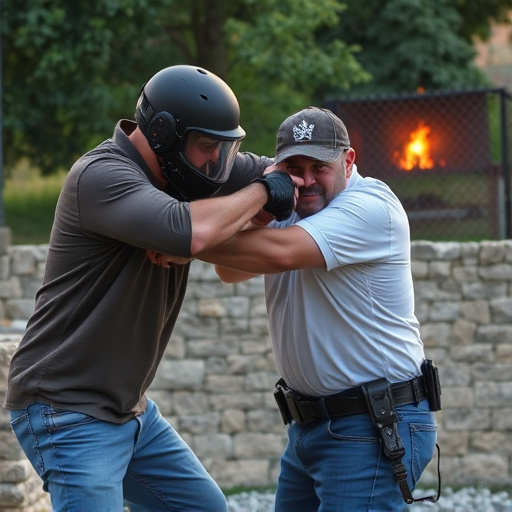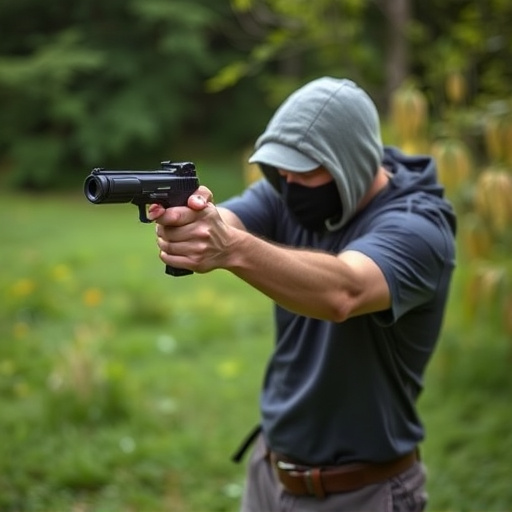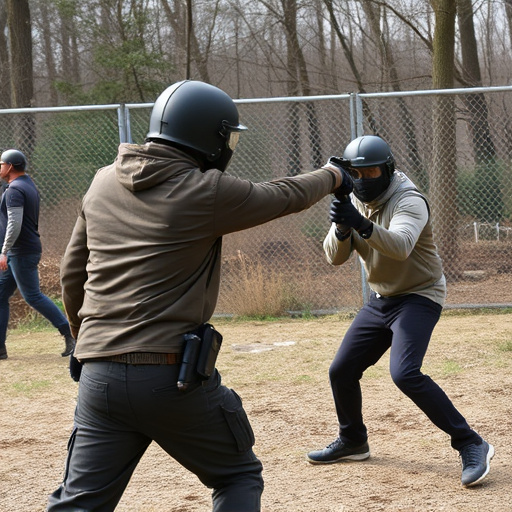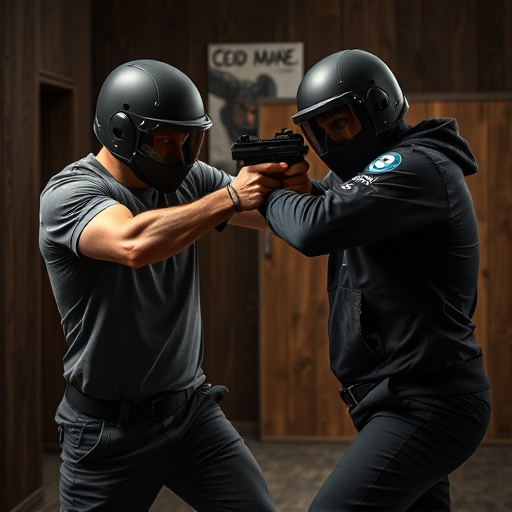Designing compact stun guns with built-in chargers requires balancing electrode spacing for optimal effectiveness, durability, and safety. Precise electrode placement enhances current flow and stun intensity while mitigating arcing risks. Smaller devices prioritize faster discharge but increase electrical breakdown chances, while wider gaps reduce impact. Strategic electrode arrangement, integration of built-in chargers, and performance testing ensure these tools provide powerful, reliable self-defense in a compact form factor.
A compact stun gun with a built-in charger offers portability and convenience, but its electrode spacing significantly impacts shock effectiveness. This article delves into the optimal design considerations for such devices, focusing on electrode placement and its role in delivering powerful jolts. We explore how built-in chargers affect electrode health and performance while providing insights into testing key performance metrics to ensure stun gun reliability.
- Compact Stun Gun Design: Spacing Considerations
- Electrode Placement for Optimal Shock Effectiveness
- Built-in Charger: Impact on Electrodes & Performance
- Testing Stun Gun Spacing: Key Performance Metrics
Compact Stun Gun Design: Spacing Considerations

The design of a compact stun gun, particularly those featuring a built-in charger, demands careful consideration of electrode spacing for maximum effectiveness. In such devices, electrodes are typically arranged in close proximity within a small form factor, allowing for ease of carry and convenience. However, this compactness can pose challenges in ensuring optimal electrical performance. Engineers must strike a delicate balance: the closer the electrodes are placed, the more efficient the current flow and the stronger the stun effect. Yet, excessive proximity may lead to arcing or reduced durability.
The compact stun gun’s aesthetic and ergonomic design goals often influence electrode placement. Smaller devices may have shorter electrode gaps, which can increase the risk of electrical breakdown but also contribute to a faster discharge. Conversely, wider spacing could reduce the device’s overall size but might lessen the impact of the stun. Thus, manufacturers must carefully engineer electrode arrangements, taking into account not only form factor but also safety and efficacy in delivering a powerful stun.
Electrode Placement for Optimal Shock Effectiveness

The placement of electrodes on a stun gun is crucial for maximizing the shock’s effectiveness. In the case of a compact stun gun with built-in charger, manufacturers carefully design the electrode positioning to ensure optimal performance. Typically, these devices feature two or more small, precisely located electrodes that deliver an electric current directly to the target’s nervous system. This strategic placement allows for a concentrated and powerful shock, enhancing the stun gun’s overall effectiveness.
When using any stun device, proper electrode spacing ensures that the current flows efficiently through the body, causing muscle contractions and disorienting the individual without significant harm. The compact nature of these stun guns often means their electrodes are optimized for proximity to the user, making them ideal for self-defense situations where speed and portability are paramount.
Built-in Charger: Impact on Electrodes & Performance

The inclusion of a built-in charger in a compact stun gun design significantly influences both the device’s electrodes and overall performance. This integrated charging system offers several advantages, ensuring users always have a charged device ready for use. The benefit is particularly notable for those who rely on self-defense tools as part of their daily lives or for professionals who need to be prepared at all times.
In terms of electrode spacing and effectiveness, the compact stun gun’s design must strike a balance between size and power. A well-designed built-in charger allows for efficient energy distribution across the electrodes, ensuring optimal shock delivery while maintaining a slim profile. This attention to detail is crucial in maximizing the stun gun’s impact, as it enables users to rely on the device’s effectiveness without compromising portability or convenience.
Testing Stun Gun Spacing: Key Performance Metrics

When testing a compact stun gun with built-in charger, understanding electrode spacing is paramount to ensure effectiveness. Key performance metrics include current flow and voltage output across different combinations of electrode placement and target size. Researchers often simulate various scenarios to gauge how proximity and alignment impact stun gun performance.
For instance, tests might involve positioning electrodes at varying distances on a compact stun gun, then measuring the time it takes to immobilize a subject or the level of force required. These metrics are crucial for optimizing electrode spacing in designs that prioritize both compactness and effectiveness. By refining these parameters, manufacturers can create stun guns that offer reliable protection without compromising portability.
The optimal design of a compact stun gun with built-in charger lies in balancing electrode spacing and performance. By understanding the strategic placement of electrodes, as discussed in this article, manufacturers can ensure maximum shock effectiveness while maintaining a sleek, portable device. Testing key performance metrics allows for continuous improvement, ensuring users receive a reliable tool for self-defense.
